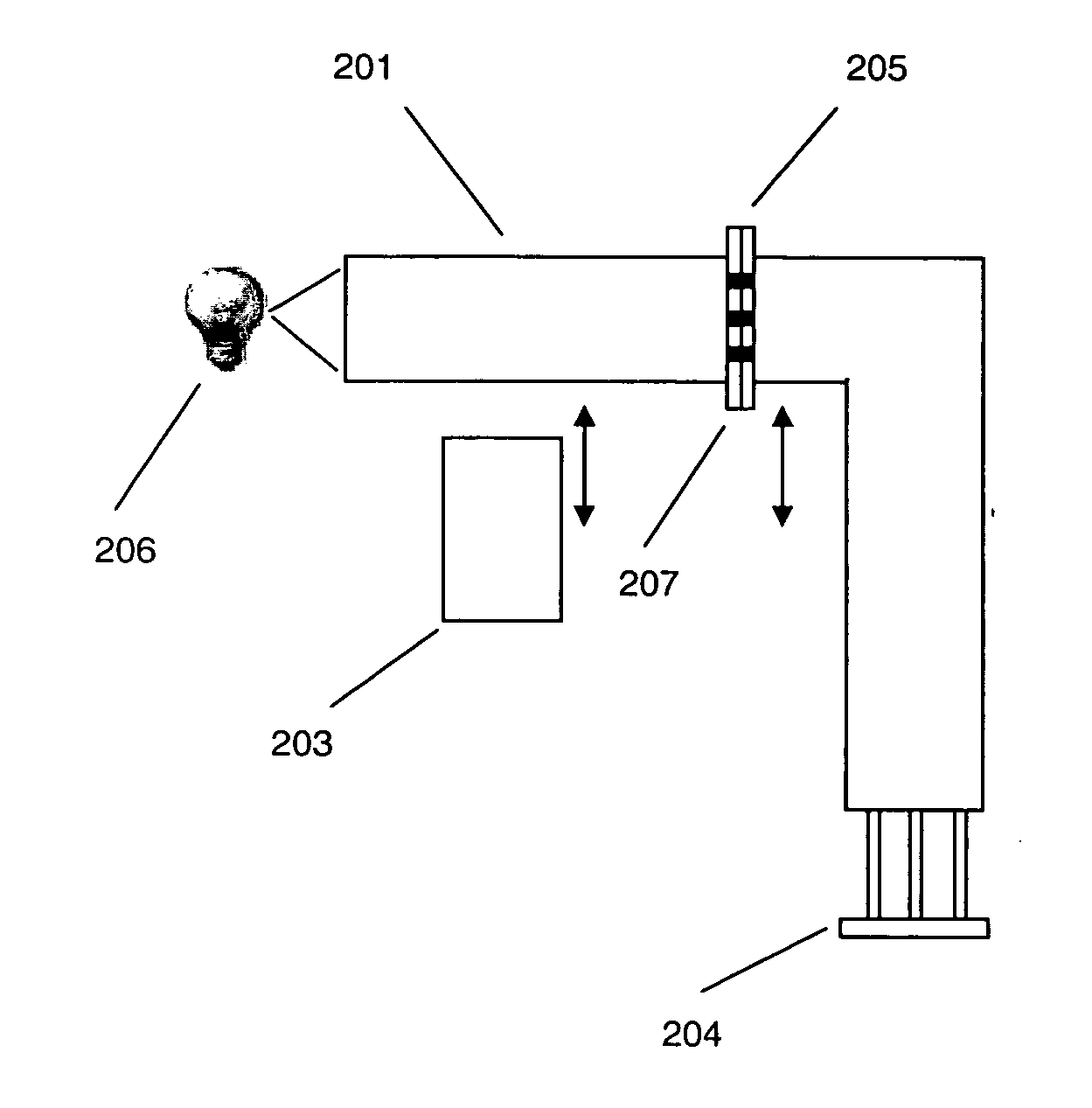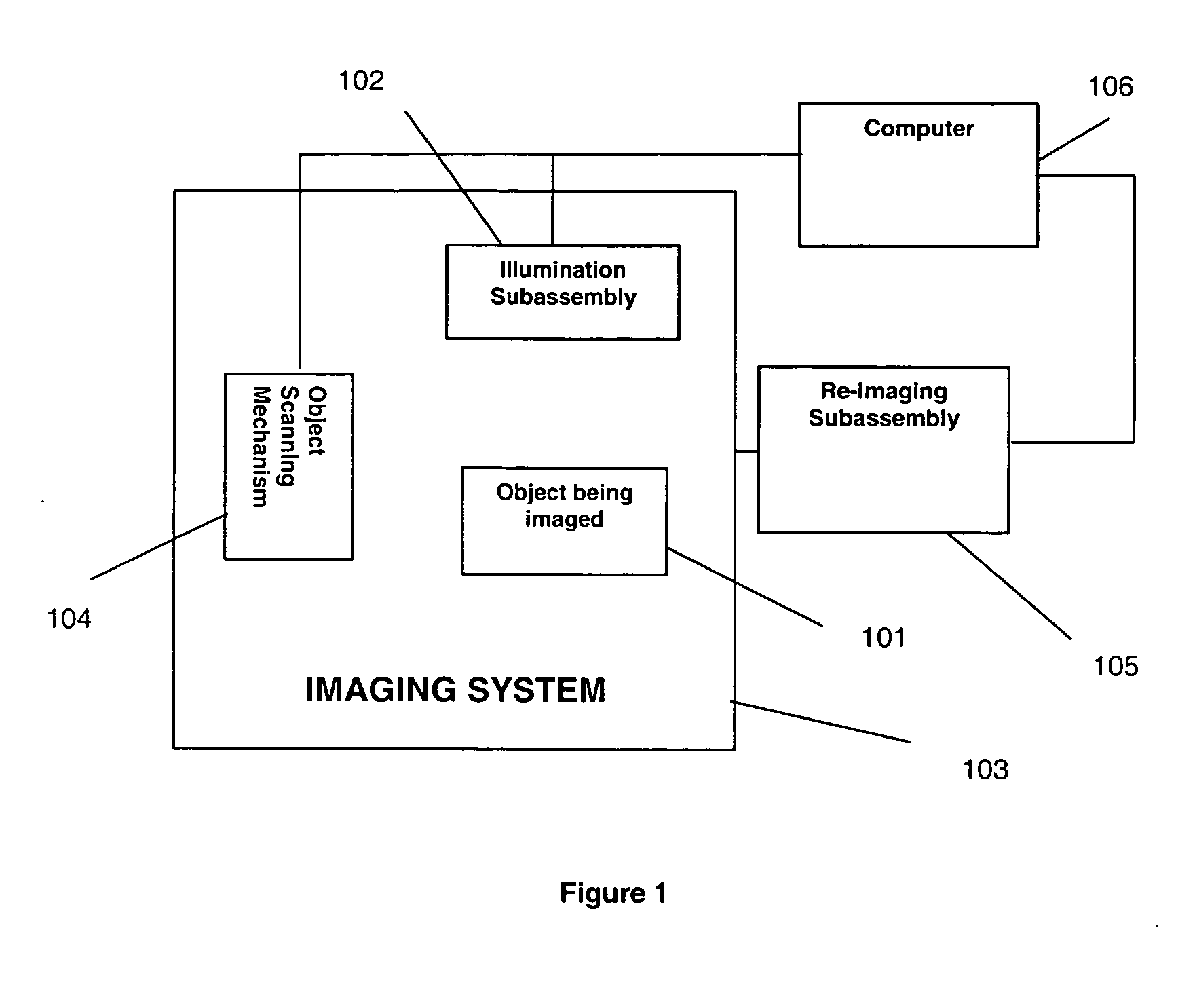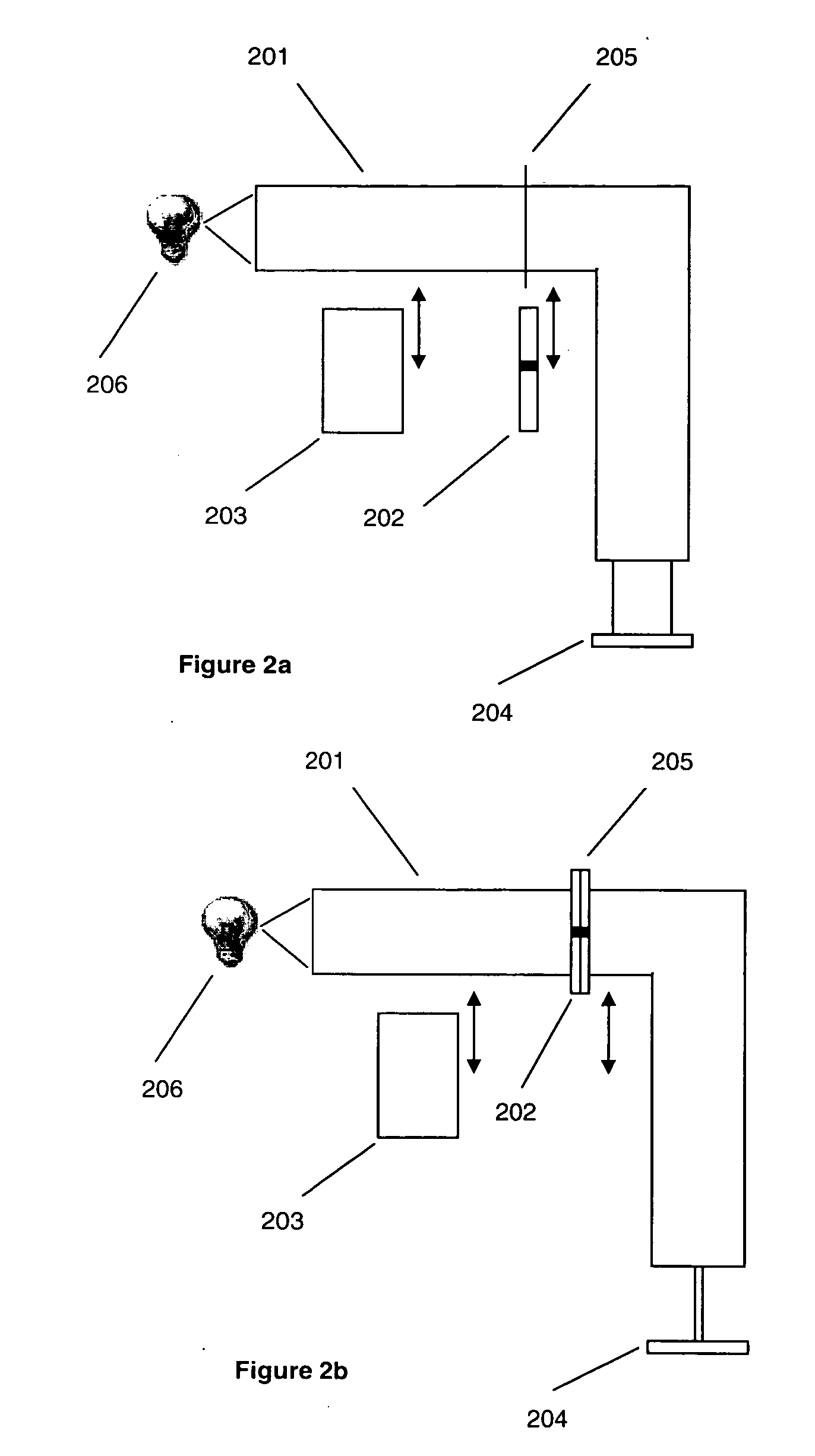Method and apparatus for multi-mode spectral imaging
a multi-mode, spectral imaging technology, applied in the direction of fluorescence/phosphorescence, optical radiation measurement, instruments, etc., can solve the problems of low transmission efficiency, significant light loss, and inability to provide two-dimensional spatial maps of the spectra emanating from an obj
- Summary
- Abstract
- Description
- Claims
- Application Information
AI Technical Summary
Benefits of technology
Problems solved by technology
Method used
Image
Examples
Embodiment Construction
[0045] The present invention is a multi-mode spectral imaging method and apparatus for acquiring multi-dimensional images. The present invention allows for the creation of at least one image data cube corresponding to the same two-dimensional image at more than one wavelength, polarization or intensity. This data cube, in one embodiment, may be produced in two modes. In mode #1, multiple high-spatial resolution images are acquired simultaneously at either a small number of wavelengths (low spectral resolution), a small number of polarization states, or a small number of intensities, thereby achieving high temporal resolution images. In mode #2, the object is scanned in time to produce high-spatial resolution images, with high spectral resolution. However, due to the scanning nature of mode #2, the temporal resolution is limited by the scan rate. When critical illumination conditions are satisfied, mode #2 can be operated with the additional feature of confocal imaging. All imaging m...
PUM
| Property | Measurement | Unit |
|---|---|---|
| fluorescence | aaaaa | aaaaa |
| areas of illumination | aaaaa | aaaaa |
| optical states | aaaaa | aaaaa |
Abstract
Description
Claims
Application Information
 Login to View More
Login to View More - R&D
- Intellectual Property
- Life Sciences
- Materials
- Tech Scout
- Unparalleled Data Quality
- Higher Quality Content
- 60% Fewer Hallucinations
Browse by: Latest US Patents, China's latest patents, Technical Efficacy Thesaurus, Application Domain, Technology Topic, Popular Technical Reports.
© 2025 PatSnap. All rights reserved.Legal|Privacy policy|Modern Slavery Act Transparency Statement|Sitemap|About US| Contact US: help@patsnap.com



